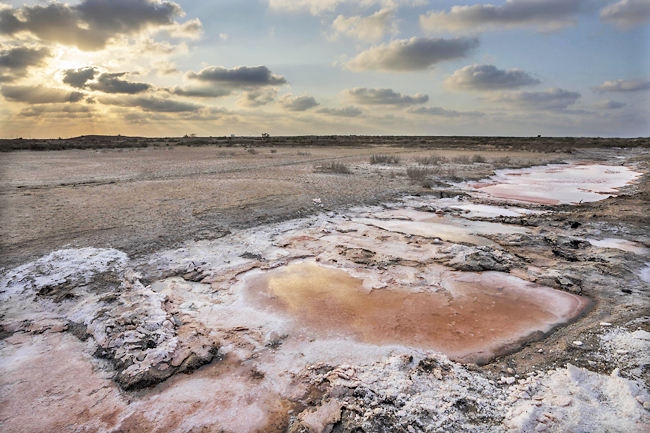Samy Magdy
ROSETTA, EGYPT (AP) – Sayed Abuel-Ezz has seen his crops wither from seawater before. As the Nile Delta farmer walks among his mango trees on his land not far from the Mediterranean Sea, he worries it will happen again despite spending the equivalent of tens of thousands of dollars to prevent it.
“If it gets higher, the trees will die,” Abuel-Ezz said, looking towards the sea.
Here, the impact of climate change has long been obvious to farmers, in the creeping salt that eats away roots and cakes their fields, turning them barren.
They pay a fortune to bring in truckloads of earth to try to raise their crops above the salt pushed into the soil by rising sea levels. But they said it is getting worse.
Bus drivers can see the changes too, how the sea more and more easily spills over onto the land. Now every winter, parts of the vital international highway running the length of Egypt’s coast are flooded, said drivers on the route.

Situated on Egypt’s northern coast on the Mediterranean, the Nile River Delta is one of the world’s three most vulnerable hot-spots to climate change impacts, including rising sea levels, according to a 2007 report by the United Nations (UN)-backed Intergovernmental Panel on Climate Change.
As Egypt hosts the UN global climate summit COP27 this month, the country’s leaders have said the predicament of the Delta, known for millennia for its fertile soil, is foremost among their concerns. Residents are hoping for help to deal with the consequences of a warming planet. The Delta covers roughly 240 square kilometres (km), starting just north of the capital of Cairo where the Nile River fans out. The rivers’ branches created the rich, fertile land by depositing silt as they made their way to the sea. Since ancient times, the area has been the food basket of empires.
It’s heavily populated, home to some 40 per cent of Egypt’s 104 million people and accounts for half of the country’s economy, according to the UN food agency. Farms and fisheries along the two Nile branches, Rosetta in the west and Damietta in the east, help feed the country and provide products for export.
All of that is increasingly threatened by climate change and rising seas. A quarter of the Delta sits at or below sea level.
An increase between 0.5 and one metre – which could happen by 2100 in one of the UN-backed panel’s worst case scenarios – will shift the coastline inward by several kilometres, submerging large areas and rendering more barren with salt.
That’s according to a recent report by an international group of scientists overseen by the Cyprus Institute’s Climate and Atmosphere Research Centre and the Max Planck Institute for Chemistry.
“This would imply severe challenges for coastal infrastructure and agriculture, and can lead to the salinisation of coastal aquifers, including the densely populated and cultivated Nile Delta,” said George Zittis, who co-authored the report.
The scenario judged to be more likely by the panel is that the sea will rise by 0.3-0.6 metres by 2100.
That will still render thousands of acres unfit for farming or habitation.





